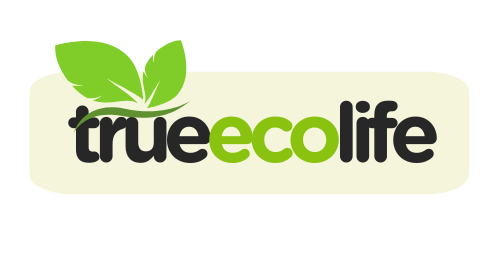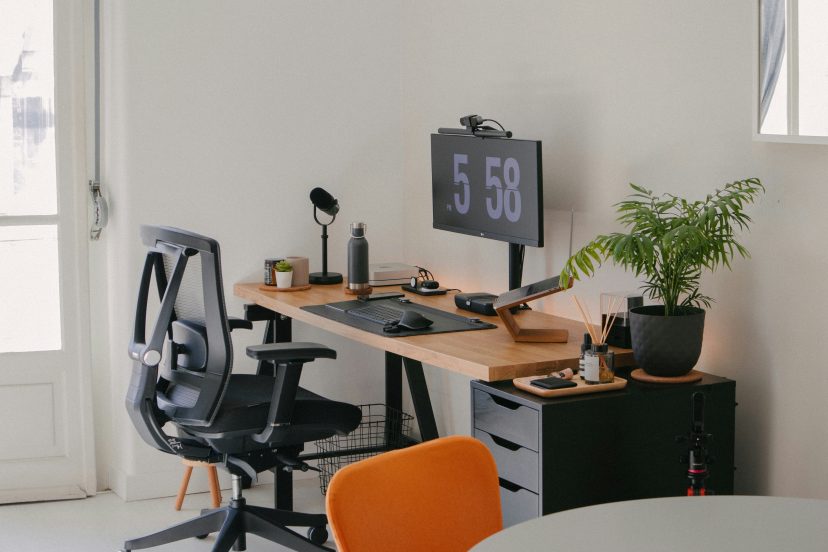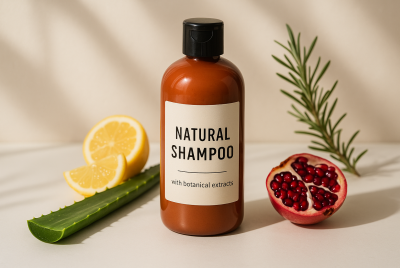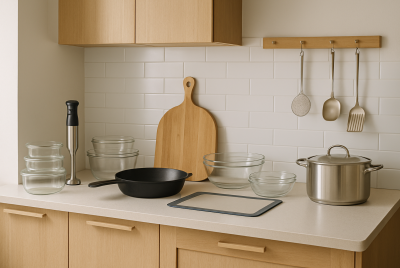7 Swaps to Make Your Office Setup More Sustainable
We may earn a commission for purchases made using our links. Please see our disclosure to learn more.
If you’ve been working from home or sitting in the same office every day, you know how fast waste adds up. Paper stacks. Plastic pens pile up. Electronics stay plugged in around the clock. It doesn’t just impact the planet. It affects you too. Cluttered desks and poor air quality can drain your energy, focus, and comfort. Over time, it takes a toll. But here’s the good news: you don’t need to start from scratch. Just a few simple swaps can transform your space. These seven sustainable upgrades will help you create an office setup that feels better—and does better—for you and the environment.
Why a Sustainable Office Setup Matters More Than Ever
Before we dive into the swaps, let’s zoom out for a moment.
Your office setup isn’t just where you answer emails or power through Zoom calls. It’s where you think, create, problem-solve, and spend a huge chunk of your day. So why not make it a space that reflects your values?
A sustainable office doesn’t require a total design overhaul. It’s about making intentional choices—opting for materials that last longer, generate less waste, and support your well-being. From minimizing VOC exposure in furniture to reducing daily paper use, even small shifts can lead to big changes.
And science backs this up. In a peer-reviewed Harvard study on cognitive performance in green-certified buildings, researchers found that employees scored 61% higher on cognitive function tests compared to those in conventional office environments. The study credited better air quality, lower CO₂ levels, and reduced exposure to volatile organic compounds (VOCs) as key factors behind the improved performance.
Another comprehensive review on healthy office environments emphasized how biophilic design elements—like plants, natural light, and sustainable materials—contribute to lower stress levels, higher concentration, and improved productivity across industries.
In short: a greener office setup isn’t just better for the planet. It’s also better for your body, brain, and business.
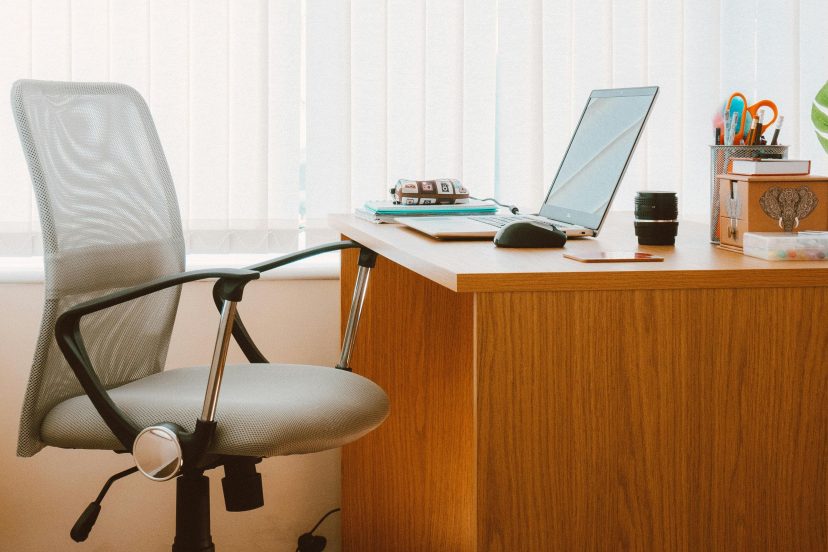
1. Swap Your Desk for a Sustainable One
Let’s start with the centerpiece: your desk. Most budget desks are made from MDF or particleboard, both of which can release formaldehyde and are hard to recycle. Instead, look for options made with FSC-certified wood, reclaimed lumber, or bamboo—a fast-growing, low-impact material.
Not only do these materials reduce your carbon footprint, but they also add warmth and natural texture to your space. Pair that with a minimalist setup and you’ve got a workspace that’s easy on the eyes and the Earth.
Try the Sauder Steel River Writing Desk, which features a reclaimed wood aesthetic and FSC-certified materials—perfect for creating a sustainable yet stylish workspace.
2. Trade Your Plastic Chair for an Ergonomic Eco-Friendly Chair
An ergonomic chair is a must-have, especially if you spend 6–8 hours a day working. But not all chairs are created sustainably. Many are made from virgin plastic and synthetic foam that’s difficult to recycle.
A better option? Chairs designed with recycled materials, biodegradable fabrics, and low-emission manufacturing practices. They provide the same back support and adjustability, without the environmental guilt.
The Herman Miller Ergonomic Chair is an excellent choice—it’s made with minimal materials, 93% recyclable, and designed for maximum comfort during long work sessions.
3. Replace Regular Bulbs with LED Desk Lighting
Lighting is often overlooked, but it plays a major role in both sustainability and eye health. LED desk lamps use up to 80% less energy and last years longer than traditional bulbs. Some also come with motion sensors or daylight modes to adapt to your work habits and reduce energy use even further.
They not only help reduce your energy bill but also emit a cleaner, more natural light that reduces strain on your eyes—especially helpful if you’re working late.
Consider the LED Desk Lamp—a flicker-free, wide-coverage light that adjusts brightness and color temperature based on your needs.
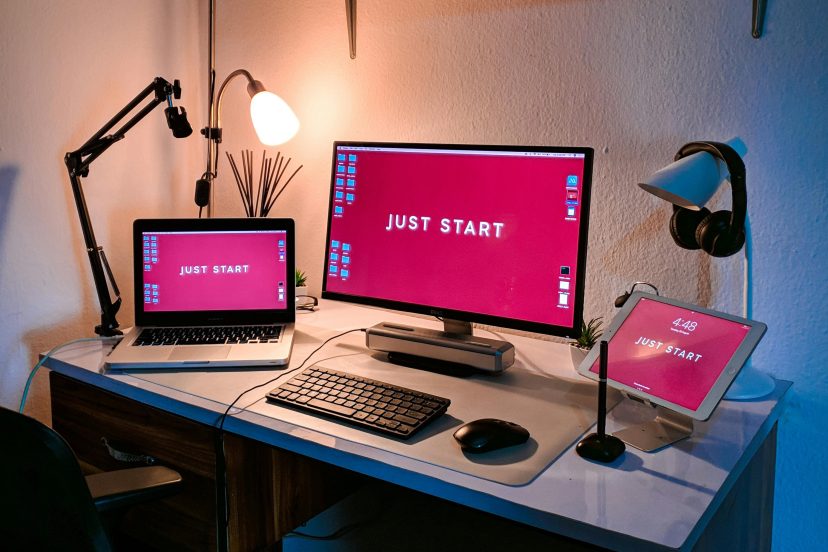
4. Ditch Disposable Notepads for a Reusable Smart Notebook
Paper is one of the biggest contributors to office waste. While jotting down thoughts or to-do lists is part of many workflows, using disposable notepads every week adds up—both financially and environmentally.
Smart notebooks allow you to handwrite your notes, upload them digitally to the cloud, and wipe the pages clean to use again. You get the feel of writing by hand with the convenience of digital storage—zero waste, and no more searching through piles of paper.
Try the Rocketbook Core Reusable Smart Notebook—you can write, scan, and reuse endlessly, all while syncing with your favorite cloud apps.
5. Use a Refillable Pen Instead of Disposable Ones
Think about how many plastic pens you’ve thrown away in the past year. Multiply that by millions of workers worldwide—and you can imagine the landfill problem.
A simple change is switching to a refillable fountain pen or ballpoint. They feel luxurious to write with, last for years, and drastically cut down your plastic use. You can even choose ink cartridges made from recyclable materials.
The LAMY Safari Fountain Pen is a sleek and sustainable option. It writes smoothly, looks professional, and can be refilled over and over again.
6. Upgrade to Power-Saving Tech
Your gadgets draw a lot of energy—even when idle. Fortunately, Energy Star-rated devices, auto-sleep settings, and USB-C charging hubs can help slash your power consumption.
Start by replacing old monitors and peripherals with energy-efficient alternatives. Look for keyboards and mice made from recycled plastics or bamboo, and don’t forget to plug everything into a smart power strip to avoid phantom power drain.
A few excellent options include the Dell 24-Inch Monitor, the Logitech K780 Multi-Device Keyboard made from recycled plastic, and the Kasa Smart Plug Power Strip that lets you control multiple devices from your phone.
7. Add Air-Purifying Plants Instead of Plastic Decor
Fake plants might look pretty, but they’re usually made of PVC—a plastic that’s harmful to the environment and nearly impossible to recycle. Real plants, on the other hand, do so much more than sit pretty.
Indoor greenery like snake plants, peace lilies, and pothos naturally purify the air, absorb toxins, and can even reduce stress levels. They’re perfect low-maintenance companions for your desk setup.
Add a snake plant or pothos in a bamboo or ceramic planter to create a fresh, living workspace that breathes—literally.
Conclusion
Creating a more sustainable office setup doesn’t mean starting from scratch. Small, thoughtful swaps—like choosing eco-friendly furniture, reusable supplies, and energy-saving tech—can make a big difference over time. These changes support your health, boost productivity, and help reduce your environmental footprint. Want to take it a step further? Explore these sustainable home methods to bring the same eco-conscious mindset into the rest of your living space.
FAQs
1. What is the easiest way to make my office more sustainable?
Start with low-effort changes like switching to LED lighting or adding air-purifying plants. They’re affordable and have a big impact.
2. Are there sustainable options for tech accessories?
Yes! Look for Energy Star certifications, devices made from recycled plastic, or rechargeable gear that reduces battery waste.
3. Is bamboo really eco-friendly?
Absolutely. Bamboo grows quickly, needs little water, and doesn’t require replanting—making it a sustainable superstar for furniture and accessories.
4. Do smart notebooks actually replace paper?
For most day-to-day tasks—yes. They’re great for meeting notes, journaling, or brainstorming, and let you upload everything to your cloud.
5. How can I stay eco-conscious without overspending?
Focus on quality over quantity. Buy fewer, better items that last longer. Thrift gently used items, and upgrade your space one piece at a time.
